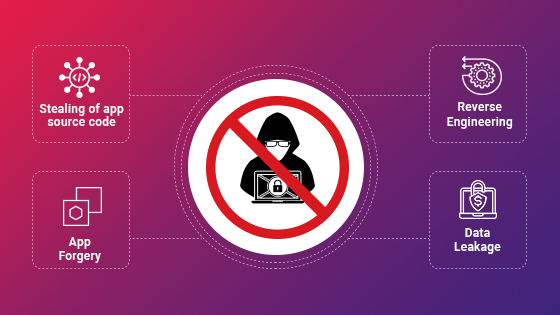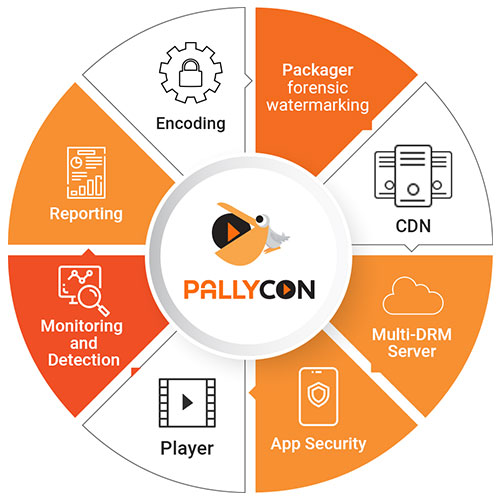
OTT apps should add App Security along with Multi DRM and Anti-piracy Solutions as per New Security Standards
There has been a massive proliferation of over-the-top (OTT) entertainment apps since the concept first emerged about a decade ago. While the industry went through its own growth cycle over the years, things have particularly escalated over the past year due to COVID-19 pandemic-induced lockdowns and people staying and working from home.
This has led to a varied choice for the consumers but also an increased need for OTT platform developers and managers to focus on its security as it could adversely affect their revenue models. After their first need to address this sudden rush of new consumers to join OTT platforms as a new source of entertainment is taken care of, they need to address the security concerns to win the trust of Hollywood studios. This is particularly true of new apps, as they concentrate more on acquiring subscribers, often at the cost of compromising security.
How OTT apps are attacked
Most content providers, especially established Hollywood studios, do not allow their premium content in the highest resolution to be distributed through untrusted apps. Both established and new OTT platforms need to look at specific threat vectors that could affect their apps, like reverse engineering, malware attacks, shared object (SO) file tampering, and app forgery among others. Reverse-engineered apps pose the greatest risk to users, especially when the forged app is uploaded on untrusted app stores and users are lured into downloading them by showing details of popular movies, shows, or sporting events, whose impulse to prefer an unofficial app could be to gain access to streaming videos for free.

Related Article – Securing OTT Content with Multi-DRM & Forensic Watermarking
The whole OTT sector rests on the concept of paid subscriptions, and this comes under attack from hackers when they try to manipulate SO files to break the barrier between free/trial and paid subscriptions. OTT platforms need to protect their SO files more than anything else if they want to protect their revenue.
Many times, app developers forget to obfuscate all aspects of their apps’ code base, including the JavaScript code. While the logic of code can be exploited by hackers to insert malware, rig subscriptions, or fully re-engineer the apps, competitors can study the JavaScript to understand the UX and other client-side features and create a more efficient competitive product.
The other set of security threats involves misconfiguration or system misconfiguration, which happens when app configuration is not disabled and a hacker identifies the flaw and exploits the information or when set up pages are enabled with default usernames and passwords compromising data security. Other methods, like zero-day vulnerabilities (like a sudden unexpected breach in the system), brute-force attack (like relentlessly badgering the system by trial and error method of determining passwords), and distributed denial of service (like a cyber attack against a network resource) are also being used to target OTT apps.
End-to-End security using Multi-DRM and App Security Solutions

The first line of defense for OTT platforms is digital rights management (DRM), since their primary security concern is to stem piracy of premium video content. The DRM system allows or denies users access to the encrypted content using a series of permissions and security checks every time they login. Implementing DRM solutions, however, is fraught with risks, as it works with multiple systems in an OTT ecosystem. This is further complicated by the fact that some of the components of the DRM solutions are not developed in house by DRM developers but are created using third-party solution providers. This is why OTT platforms choose a multi-DRM SaaS to prevent content leakage, manage device fragmentation, and enforce subscription-related limitations, like the number of devices allowed per subscription plan.
Most OTT platforms choose to combine a multi-DRM approach with forensic-watermarking and anti-capture technologies. While the latter stops illegal copying of premium video content, the former allows the content owner to track illegal copies and initiate legal process.
HollyWood Studios recently shared guidelines to make app security mandatory and a top priority solution by OTT players along with Multi-DRM solutions. However, the OTT platforms as a whole are slow to realize the importance of app-level security.
Related Article – Introducing PallyCon for OTT
While multi-DRM approach has become the de facto standard to prevent piracy in the OTT sector, more advanced players choose a comprehensive app-security SaaS, which wraps the OTT app in a security layer on the fly that protects an app with features like RASP security, code obfuscation, anti-tampering of SO and DEX files, man-in-the-middle attack protection, and real-time monitoring against existing and emerging threats.

PallyCon provides cloud-based SaaS multi-DRM solution and Forensic Watermarking service. Cloud services built on AWS enables you to use services in the cloud. Get started contents protection quickly and easily with PallyCon.



